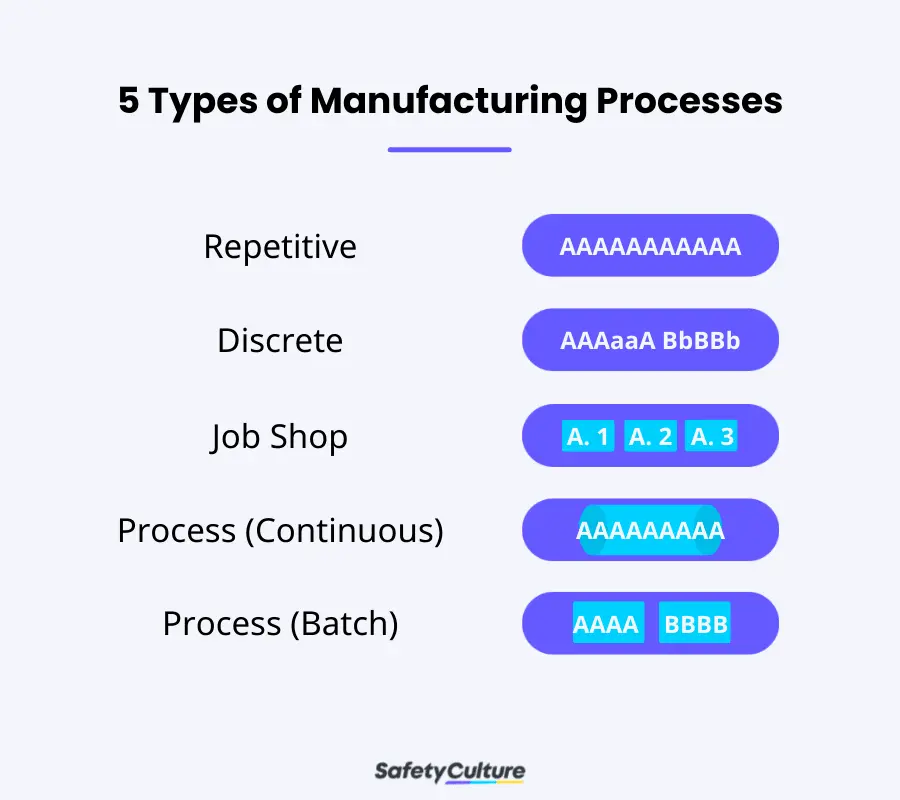What is Manufacturing Operations?
As defined by Industry Forum, “Manufacturing Operations is where people, processes and equipment come together to add value to material and produce goods for sale.” Another good definition came from Propel. Their article said that, “It is the holistic, ongoing process of providing complete visibility into manufacturing processes and production performance.”
Therefore, manufacturing operations involves all the processes—including inventory management, materials requirement planning (MRP), supply chain management, sales management, production cost, and quality control—needed in order to produce goods for consumers and earn profit.
Parts of Manufacturing Operations
There are three main parts of manufacturing operations. They are:
- Direct materials—this includes all of the raw materials or the individual pieces of hardware materials used to make products.
- Direct labor—this includes the labor that comes from skilled workers for hand-made goods or labor that comes from workers hired to run machines or equipment.
- Manufacturing overhead—this is also called “factory overhead,” pertaining to all manufacturing costs or expenses that are considered indirect but still related to production, such as utilities, quality control costs, and minor parts like screws, bolts, and solder.
Business Model for Successful Manufacturing

A successful manufacturing business requires the involvement of:
- Total Productive Maintenance—this pertains to the goal of eliminating downtime, defects, and accidents, as well as removing health and safety risks through the use of better manufacturing systems and practices in maintenance.
- Lean Manufacturing—this pertains to the elimination of waste, optimization of processes, reduction in expenses and in the time needed to produce goods.
- Six Sigma—this pertains to the approach in addressing quality issues or removing the likelihood that an error or defect will occur before six standard deviations from the process mean or target.
Five Types of Manufacturing Processes

As mentioned in the definitions of manufacturing operations, two key phrases are emphasized: (1) manufacturing processes; and (2) production performance. There are 5 types of manufacturing processes that manufacturers use depending on the kind of goods they are producing. They are:
- Repetitive Manufacturing (REM)—this is a type of manufacturing process wherein same (or similar) goods are produced in a rapid succession following a repetitive or ongoing sequence over a lengthy period of time; this often means that goods are manufactured with an automated assembly line process. Examples: REM is often used in the automotive and electronics manufacturing industries and by businesses utilizing a make-to-stock production strategy.
- Discrete manufacturing—this is a type of manufacturing process wherein goods are also produced in an assembly line; but unlike repetitive manufacturing, this allows for modifications, additional set-up, or removal in a product that may take longer production time. Examples: Discrete manufacturing involves parts and systems like nuts and bolts, brackets, wires, assemblies and individual products.
- Job shop manufacturing—this is a type of manufacturing process wherein production is done in multiple designated workstations or workshops instead of a single assembly line. This process is also used in cases wherein the manufacturing of products needs to be done by highly-trained workers, such as in the manufacturing of items used in the aerospace and defense industries which require intensive quality control or high-quality build. Examples: Manufacturing custom cabinets—wherein workers do their task in their workstations; one group may be in charge with the sawing of lumber, another workstation for putting hinges and pulls, and another one for finishing or polishing with varnish or lacquer, until the final phase is reached.
- Continuous process manufacturing—this is a type of manufacturing process that is quite similar to repetitive manufacturing, with the only difference being that this process is used for raw materials that are commonly gases, liquids, and powders.
Examples: Continuous process manufacturing is mostly being used by oil refineries or by the manufacturers of food products such as tomato sauce, juice, and peanut butter. - Batch process manufacturing—this is a type of manufacturing wherein products are produced in batches.Examples:
- Food production
- Newspaper printing
- Bookbinding
Depending on your manufacturing business and the type of product you are seeking to produce, the manufacturing process you choose will be different from that of other businesses and the manufacturing of other products. In some situations, a combination of multiple manufacturing processes may even be beneficial.
In relation to this, it might be ideal to utilize a hazop software that can help determine the best manufacturing process for a product—while considering safety and operability.
Key Performance Indicators for Production Monitoring
Key Performance Indicators (KPIs) are widely used by companies in order to assess and measure their operations. Although KPIs differ from business to business, there are seven basic KPIs used in the manufacturing industry. They are as follows:
- Count –this pertains to measuring the total production output in a particular shift, a week, or a certain period of time
- Reject Ratio –this pertains to measuring produce scrap and keeping it to acceptable limits
- Rate –this pertains to measuring the speed of production
- Target –this pertains to setting target values for every category e.g. target output, target rate, and target quality
- Takt Time –this pertains to monitoring the amount of time it takes to complete a production run or to complete a cycle for a specific operation
- Overall Equipment Effectiveness (OEE) –pertains to measuring the effectiveness of equipment or machinery during production
- Downtime –this pertains to tracking the amount of time production is stopped, which indicates a loss in profit
The success of a company is dependent in large part on its processes and the proper implementation of those processes by its workers.
Achieve operational excellence
Cultivate a culture of excellence with our digital solutions that enhance efficiency, agility, and continuous improvement across all operations.
Explore nowAdvantages of Manufacturing Operations
Ensuring that you have the right processes in place across your manufacturing operations can be extremely beneficial to the ability of your business to satisfy customer demand. The benefits of proper manufacturing operations for your business include the following:
- Reach a higher level of safety and quality control
With proper manufacturing operations in place, you will be able to monitor the quality of your production since you have already set specific values, targets, and performance goals for it. You’ll be able to execute control over the manufacturing process, ensuring that all products meet the set standards and specifications before getting approved for release. - Catch issues quickly
If a problem arises, you’ll be able to spot it and solve it quickly, saving time and money in the long run. You may also be more certain that materials used in your operations meet safety and quality requirements and assured that you have the best materials available to produce your product. - Reduce waste
Another benefit of employing manufacturing operations is that it aids in reducing the seven deadly wastes mentioned in lean manufacturing. - Simplify your production operations
Manufacturing operations is all about making the production process as simple as possible, without affecting quality
Explore our Free Manufacturing Templates
See how digital checklists simplify business processes with just a tap.
View nowSafetyCulture (formerly iAuditor) for Manufacturing Operations
Leverage your manufacturing operations by investing in the right manufacturing technology to ensure effectiveness in your process control, production planning, production control, and quality control. Use SafetyCulture, the best tool offering solutions for the manufacturing industry to aid workplace safety, quality control, production management, and supply chain auditing.
With SafetyCulture, manufacturers and operations managers can:
- Track manufacturing processes to identify where bottlenecks are occurring.
- Access your operations-related documents and records from a single, secure, and cloud-based location and share them with your team.
- Evaluate your production processes and production performance by conducting inspections and auditing the quality of your end-products.
- Conduct paperless inspections—a more convenient way to ensure that machines, equipment, and tools are in proper working conditions.
- Keep your production lines running smoothly by performing maintenance management through routine inspections of machines and equipment.
- Keep track of stocks and supplies more efficiently by using inventory templates on a mobile device.
- Coordinate with various stakeholders through proper communication channels using Heads Up.
- Train employees on proper manufacturing practices and safety considerations.
- Monitor the movement and usage of assets.



